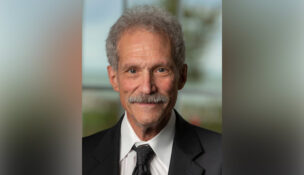A year at the top
By: Caley Clinton, [email protected]//April 8, 2014//
 Serving as president of the State Bar of Wisconsin is like riding a Ferris wheel that goes around only once.
Serving as president of the State Bar of Wisconsin is like riding a Ferris wheel that goes around only once.
The wheel can start turning many years before a candidate gets near the top. Those who choose to take that ride may need time to save money for the lean years when they have to juggle a private practice and a voluntary leadership position that can eat up a lot of time.
Once selected by the nominating committee, a candidate then moves through a blur of interviews and scheduled appearances.
But the view improves, briefly, when a candidate wins a spot as president. The president-elect, at that point, has the authority to appoint people to committees and other positions of power.
The true “power curve,” as Executive Director George Brown called it, is from March to March of an elected president’s year in office. It starts in March as president-elect, peaks July 1 with the start of the presidential term and fades the following March, when the president sinks into the more subdued role of past-president.
That year at the top goes by fast, bar presidents say, and sometimes it is too fast.
Former State Bar President Douglas Kammer had one chance during his time as president, from 2009 to 2010, to get a petition for review of the organization’s membership status past the Board of Governors. Petition approval would have been a major step toward making the bar a voluntary organization, a change for which Kammer campaigned hard during his run for office.
The measure failed by one vote, however, in June 2010 and, by July 1, 2010, Kammer’s time as president was past.
Kammer acknowledged, however, that by the time his term was over, he was “kind of glad to get out from under the pressure.”
The pressure at the top can be rooted in the difficulty finding balance between a full-time job and the duties of bar president.
President Patrick Fiedler, whose term ends June 30, said about 35 percent of his time is spent working for the bar.
Brown said some presidents spend up to half their time working for the organization.
For a volunteer position, that’s quite a load.
And, as Fiedler and others noted, the job technically is a three-year commitment, with terms as president-elect and past-president sandwiching the year at the top.
“Part of being president,” Fiedler said, “is transitioning in and out of the role.”
Any more than that, said presidential hopeful Kevin Palmersheim, who is competing with Ralph Cagle for the 2015-16 spot, is “too much to ask for volunteers.”
Cagle said he would not be surprised by the time commitment.
“I think to do a good job,” he said, “it’s what’s involved.”
But what does doing “a good job” entail? Is it getting important proposals through the BOG and the Legislature? If so, one year is not enough time.
Kammer isn’t the only president who failed to achieve his goal. Fiedler, who since September has publicly championed a bar-supported push to move some 17-year-old offenders to juvenile court, recently watched the bill die in the Assembly. At the end of his March-to-March power curve, time has run out for him to lead another run at the proposal.
“I feel very fortunate,” Fiedler said, “that [the legislative push] occurred during my year. I’m disappointed that it didn’t make it out, but I certainly hope it will pass in a future legislative session.”
And though past-presidents, both in their official year with that title and beyond, can be ongoing participants in bar politics through appointments to various committees, it is not a guarantee. Some, like Kammer, are booted off the ride as soon as they get to the bottom.
Kammer said he never was appointed to any bar committees after his time in office, though he would have liked to be.
And his time at the top, he said, was too short.
“It’s just not enough time,” he said, “to get the job done effectively.”
Caley Clinton is associate editor of Wisconsin Law Journal.
Legal News
- History made in Trump New York trial opening statements
- Prosecutor won’t bring charges against Wisconsin lawmaker over fundraising scheme
- Republican Wisconsin Senate candidate says he doesn’t oppose elderly people voting
- Vice President Harris to reveal final rules mandating minimum standards for nursing home staffing
- Election workers fear threats to their safety as November nears
- Former law enforcement praise state’s response brief in Steven Avery case
- Eric Toney announces re-election bid for Fond du Lac County District Attorney
- Former Wisconsin Democratic Rep. Peter Barca announces new bid for Congress
- Republicans file lawsuit challenging Evers’s partial vetoes to literacy bill
- More human remains believed those of missing woman wash up on Milwaukee Co. beach
- Vice President Harris returning to Wisconsin for third visit this year
- Wisconsin joins Feds, dozens of states to hold airlines accountable for bad behavior
WLJ People
- Power 30 Personal Injury Attorneys – Russell Nicolet
- Power 30 Personal Injury Attorneys – Benjamin Nicolet
- Power 30 Personal Injury Attorneys – Dustin T. Woehl
- Power 30 Personal Injury Attorneys – Katherine Metzger
- Power 30 Personal Injury Attorneys – Joseph Ryan
- Power 30 Personal Injury Attorneys – James M. Ryan
- Power 30 Personal Injury Attorneys – Dana Wachs
- Power 30 Personal Injury Attorneys – Mark L. Thomsen
- Power 30 Personal Injury Attorneys – Matthew Lein
- Power 30 Personal Injury Attorneys – Jeffrey A. Pitman
- Power 30 Personal Injury Attorneys – William Pemberton
- Power 30 Personal Injury Attorneys – Howard S. Sicula











